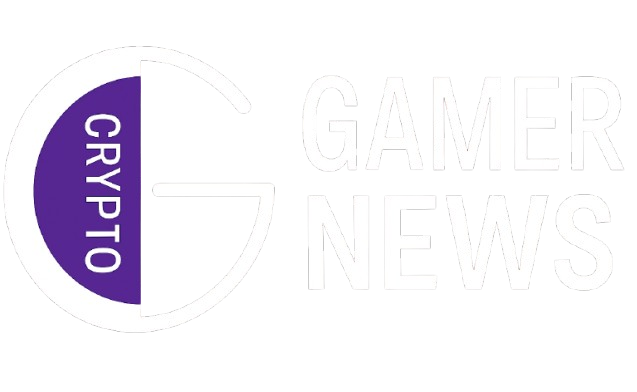
Imagine sinking hours into your favorite game, grinding for that rare sword or coveted character skin, only to realize it’s locked forever in the game’s ecosystem, worthless outside its digital walls. That’s been the reality of gaming for decades. But what if you could truly own that sword, trade it for real money, or even carry it into another game? This isn’t a distant dream—it’s the promise of Web3 gaming, a revolution that’s reshaping how we play, create, and think about games. As a lifelong gamer who’s spent countless nights battling virtual foes, I’ve seen the industry evolve from pixelated sprites to sprawling open worlds. But nothing has me as excited as Web3’s potential to redefine gaming’s future. Let’s dive into how this technology is flipping the script, empowering players, and opening new doors for developers and communities alike.
The Heart of Web3 Gaming: A New Kind of Ownership
At its core, Web3 gaming is about giving players something they’ve never had before: true ownership. Traditional games lock your progress—your skins, weapons, or characters—within their platforms. If the servers shut down, your hard-earned loot vanishes. Web3 changes that by using blockchain technology to turn in-game assets into non-fungible tokens (NFTs). These digital assets are yours, stored securely on a decentralized ledger, not a company’s server.
Take Axie Infinity, a game that exploded in popularity in 2021. Players collect, breed, and battle creatures called Axies, each represented as an NFT. Unlike traditional games, players can sell their Axies on marketplaces or trade them with others, sometimes for thousands of dollars. This isn’t just a game—it’s a digital economy where your time and skill have real-world value. I remember chatting with a friend who sold an Axie for enough to cover a month’s rent. That kind of financial empowerment was unthinkable in the days of Super Mario or even Fortnite.
But ownership goes beyond just trading. It’s about control. In Web3 games, your assets can often move between games or platforms, a concept called interoperability. Imagine using a legendary sword from one game in a completely different virtual world. This fluidity breaks down the walls of traditional gaming, creating a connected ecosystem where your progress matters across borders.
From Play-to-Win to Play-to-Earn
Web3 gaming introduces a seismic shift in how players are rewarded. The play-to-earn (P2E) model lets you earn cryptocurrency or NFTs through gameplay, turning your hobby into a potential income stream. In 2021 alone, players collectively earned over $1.3 billion through P2E models, according to Forbes. Games like Illuvium and The Sandbox reward players with tokens for completing quests or creating content, which can then be traded for real money.
This model resonates deeply in regions like Southeast Asia, where players have turned gaming into a livelihood. I read about a Filipino community where families supported themselves by playing Axie Infinity during the pandemic, a story that hit home as someone who’s always seen gaming as an escape, not a job. But P2E isn’t without flaws. Early models like Axie Infinity faced criticism for unsustainable economies, where token values crashed as more players cashed out. Developers are now pivoting to “play-and-own” models, focusing on sustainable rewards and fun gameplay over speculative earnings.
Empowering Communities Through Decentralization
One of the most exciting aspects of Web3 gaming is how it hands power back to players. Traditional games are controlled by developers or publishers, who dictate everything from updates to monetization. Web3 games, built on decentralized platforms, often use Decentralized Autonomous Organizations (DAOs) to let players influence game development. In games like Decentraland, players who hold governance tokens can vote on new features, events, or even storylines.
This community-driven approach feels like a breath of fresh air. I’ve always loved the passion of gaming communities—think of the modders who’ve kept games like Skyrim alive for years. Web3 takes that passion to the next level by giving players a real stake in the game’s future. For example, The Sandbox, a virtual world where players create and monetize their own games, has over 27,000 landowners shaping its ecosystem. It’s like being part of a digital democracy, where your voice matters.
The Role of Major Studios and AAA Titles
Web3 gaming isn’t just for indie developers. Major studios like Ubisoft and Square Enix are jumping in, signaling a shift toward mainstream adoption. Ubisoft’s Rabbids NFTs and Square Enix’s Symbiogenesis project show how big players are experimenting with blockchain. These high-budget titles bring the polish and storytelling gamers expect, bridging the gap between Web2 and Web3.
But it’s not all smooth sailing. When Ubisoft announced its NFT plans, the backlash was swift—gamers worried about pay-to-win mechanics or environmental concerns tied to blockchain’s energy use. Developers are learning that Web3 elements must enhance, not overshadow, the core gaming experience. As one industry leader put it, “It’s very important that it’s a great game, period, whether for Web2 or Web3.” The future lies in blending Web3’s innovations with the quality of AAA titles, creating experiences that feel seamless and fun.
Challenges on the Horizon
Web3 gaming’s promise is massive, but it’s not without hurdles. Scalability is a big one. Blockchain networks like Ethereum can struggle with high transaction fees and slow processing, making seamless gameplay tricky. Layer-2 solutions like Immutable zkEVM are helping by reducing costs and speeding up transactions, but we’re not there yet.
Then there’s the onboarding issue. Setting up a crypto wallet and navigating blockchain can feel like learning a new language. I tried connecting a wallet to a Web3 game last year and spent an hour troubleshooting before I could play. Developers are working on user-friendly interfaces, but mass adoption depends on making the experience as simple as downloading an app.
Regulatory challenges also loom large. Governments are still figuring out how to tax and regulate NFTs and in-game tokens, which could impact how Web3 games operate. And let’s not forget the skepticism—some critics, like Cornell’s James Grimmelmann, call Web3 “vaporware,” arguing it promises more than it delivers. Yet, with $10 billion invested in Web3 gaming by 2022, according to EDIIIE, the industry’s momentum is undeniable.
The Social Power of Web3 Gaming
Beyond economics, Web3 gaming is reshaping how players connect. Communities on platforms like Discord and Telegram are vital for building loyalty and engagement. Axie Infinity’s 869,000 Twitter followers and 591,000 Discord members show how these platforms drive adoption. I’ve joined a few Web3 gaming Discord servers myself, and the energy is electric—players share strategies, trade assets, and even collaborate on in-game projects.
Tokengating is another game-changer. By restricting access to exclusive content or events to NFT or token holders, games create a sense of belonging. Imagine owning a special NFT that unlocks a secret level or a VIP tournament. It’s like being part of an elite club, fostering deeper connections between players and the game.
The Creative Freedom of Web3
For developers, Web3 is a playground for innovation. Unlike traditional games, where assets are siloed, Web3 allows creators to design interconnected worlds. Games like Illuvium blend stunning visuals with NFT marketplaces, letting players trade rare creatures. Others, like Seraph, use dynamic NFTs that evolve based on your actions, adding depth to storytelling.
This freedom extends to players, too. In The Sandbox, anyone can design and monetize their own games, turning players into creators. I recently watched a YouTube tutorial where a teenager built a mini-game in The Sandbox and sold it for crypto. That kind of opportunity didn’t exist when I was growing up playing Nintendo.
Looking Ahead: The Future of Web3 Gaming
As we look to 2025 and beyond, Web3 gaming is poised to grow exponentially. Market Research Future projects the Web3 gaming market could hit $118.36 billion by 2034, driven by innovations in AI, virtual reality, and blockchain. Games will become more immersive, with AR/VR integration creating worlds that feel real. Imagine exploring a virtual universe where your actions shape not just the game but its economy and governance.
But for Web3 gaming to go mainstream, it must focus on fun. The first wave of P2E games leaned too heavily on monetization, alienating players who just wanted a great experience. The future lies in games that balance rewards with engaging gameplay, like Elympics’ skill-based competitions or Illuvium’s rich RPG world.
Conclusion: Embracing the Web3 Revolution
Web3 gaming is more than a trend—it’s a paradigm shift that’s redefining what gaming can be. From true ownership and play-to-earn models to decentralized communities and creative freedom, it’s empowering players and developers in ways we’ve never seen. But it’s not perfect. Scalability, accessibility, and regulatory hurdles remain, and the industry must prioritize fun over profit to win over skeptics.
If you’re a gamer, now’s the time to explore Web3 titles like Axie Infinity, Decentraland, or The Sandbox. Create a crypto wallet, dive into a community, and experiment with trading or creating assets—it’s a low-risk way to see what the fuss is about. Developers, consider integrating blockchain elements into your projects, but keep the player experience first. And if you’re a skeptic, give it a chance. Web3 gaming isn’t about replacing traditional games; it’s about expanding what’s possible.
The future of gaming is decentralized, transparent, and player-driven. It’s a world where your time, skill, and creativity have real value. So, grab your virtual sword, connect your wallet, and step into the next era of gaming. The revolution is just getting started.
FAQ
What is Web3 gaming, and how does it differ from traditional gaming?
Web3 gaming uses blockchain technology to create decentralized, player-driven experiences. Unlike traditional games, where developers control assets and data, Web3 games let players own in-game items as NFTs, trade them across platforms, and even influence game development through DAOs. Traditional games lock assets within their ecosystem, while Web3 games offer interoperability, real-world value, and community governance, making them more transparent and empowering.
How do players make money in Web3 games?
Players can earn money through play-to-earn models, where they receive cryptocurrencies or NFTs for completing in-game tasks, like quests or battles. For example, in Axie Infinity, players earn Smooth Love Potion (SLP) tokens, which can be traded for real money. NFTs, like rare characters or items, can also be sold on marketplaces. However, profitability depends on the game’s economy and market conditions, and players should research risks before investing time or money.
Are Web3 games only for crypto enthusiasts?
No, Web3 games are designed for all gamers, though early adopters often have crypto knowledge. Modern Web3 games, like those on platforms like Elympics, prioritize fun and accessibility, with optional blockchain features. Developers are simplifying onboarding, so you don’t need to be a crypto expert to play. The focus is shifting toward great gameplay, with Web3 elements enhancing, not dominating, the experience.
What are the biggest challenges facing Web3 gaming?
Scalability, user experience, and regulation are the main hurdles. Blockchain networks can be slow and expensive, impacting gameplay. Onboarding, like setting up crypto wallets, can be complex for new players. Regulatory uncertainty around NFTs and tokens varies by country, potentially affecting monetization. Developers are addressing these with Layer-2 solutions, user-friendly interfaces, and compliance strategies, but widespread adoption will take time.
How can developers get started with Web3 gaming?
Developers should learn blockchain basics, like smart contracts and NFTs, through platforms like Ethereum or Immutable. Experiment with tools like Unity 3D for game development and integrate Web3 features like asset ownership or decentralized marketplaces. Partnering with firms like Galaxy4Games or Venly can streamline the process. Focus on creating fun games first, then layer in Web3 elements to enhance player engagement without overwhelming them.
